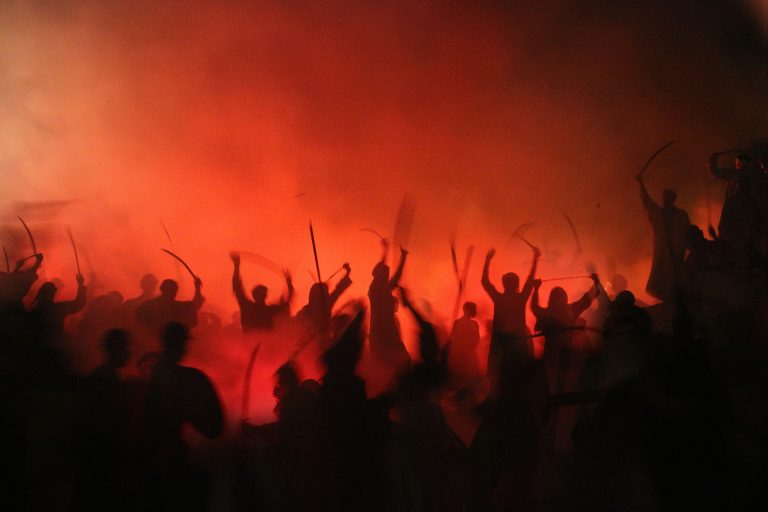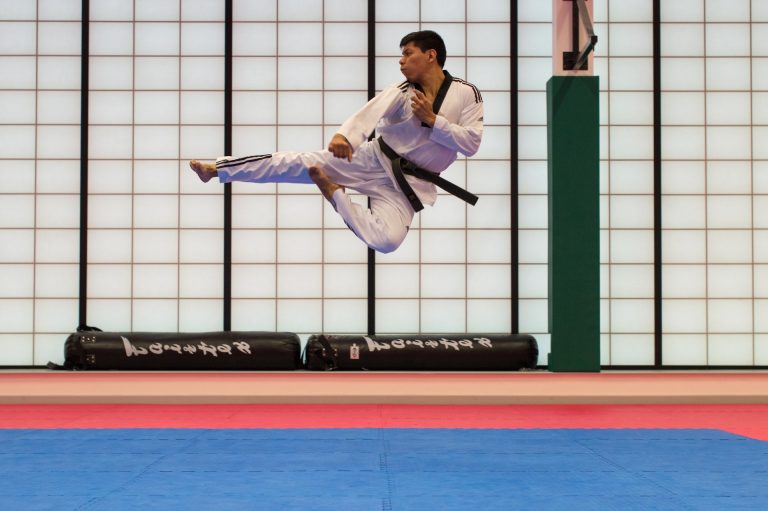Karate Shotokan Belt Levels: Everything You Need to Know
Karate Shotokan is a popular style of martial arts that originated in Japan. It involves a range of techniques, including strikes, kicks, and blocks, and is characterized by its emphasis on fluid movements and efficient techniques. Like many other martial arts, Shotokan uses a tiered system of belt levels to indicate a practitioner’s level of skill and expertise.
In this article, we will explore the different levels of Shotokan belts, what they mean, and what you can expect as you progress through the ranks.
The Basics of Karate Shotokan Belt System
Shotokan karate’s belt system is divided into several levels known as kyu and dan ranks. Students start as beginners with a white belt and work their way up through different kyu ranks until reaching the level of Black Belt. The Dan grade signifies the level of expertise gained by a karateka (practitioner).
Unlike some other martial arts, there are only two levels of colored belts in Shotokan: six kyu levels and ten dan levels. Karateka starts with a white belt and progresses through to the levels of yellow, orange, green, blue, and brown. Each of these levels is further divided into three sublevels and is represented by a different colored belt.
Generally, a student’s progress from one rank to another is determined by their performance in three principal areas: kihon (basic techniques), kata (predetermined combinations of techniques), and kumite (sparring). In addition to these areas, other factors, such as attendance, attitude, and character, also play a role in a student’s promotion.
Let’s dive into the specifics of each rank level in the Shotokan belt system.
Kyu Levels of Karate Shotokan
Kyu is the Japanese term for a student rank in martial arts. The Shotokan karate system has six kyu ranks, ranging from white to brown. Each kyu rank has three designated sub-levels.
White Belt (10th & 9th Kyu)
The white belt is the starting point for all students in Shotokan karate, representing a beginner’s level. Students in this category will learn the basics of stances, blocks, punches, and kicks. It’s the time for learning and practicing all the basic punches and strikes, footwork, and blocking techniques.
Yellow Belt (8th & 7th Kyu)
Yellow Belt is the second level of the Shotokan karate belt system. In this stage, the students learned more complicated techniques and blocked in full-body moves. Kumite, sparring exercises, is introduced through paired kata, to develop reflexes, timing and coordination.
Orange Belt (6th & 5th Kyu)
Students who have reached the orange belt level of Shotokan karate have an increased level of enthusiasm and motivation towards martial arts. They now understand their first steps in sparring and are learning some of the kata. The students can practice various forms of sparring, with a partner or a group of practitioners, to improve their movements, strikes, and defenses.
Green Belt (4th & 3rd Kyu)
Karate students who have achieved green belt have gained a higher level of expertise and experience than their previous levels. Comfortable in sparring, kata, and kumite, students of Green Belt level develop a newfound confidence through consistent practice.
Blue Belt (2nd & 1st Kyu)
As a Blue Belt, students have achieved a high level of expertise and are confident in their skills as well. The focus at this level is on perfecting kumite, kata, and techniques while being open to feedback and corrections from a senior practitioner.
Brown Belt (1st Kyu)
The brown belt is the last kyu level before the black belt. Students who have reached this level are knowledgeable in kihon, kata, and kumite techniques. They also understand the discipline, focus, and respect required to be a martial arts practitioner.
Dan Levels of Karate Shotokan
The Dan ranks are the higher levels of Shotokan karate. This is the level and the time where the expertise and experience of a practitioner are well-utilized. It recognizes the martial artist’s achievements and demonstrates what is possible in the practice of martial arts.
First Dan (Shodan)
The first dan, also known as Shodan, is the first rank in the dan level category. This signifies that the practitioner has completed the kyu ranks and has earned the right to wear the coveted black belt. At this level, the students should have mastered all the fundamental techniques and be ready to apply them in new situations using their better kumite and kata techniques.
Second Dan (Nidan)
The second dan, also known as Nidan, indicates that the practitioner has continued to train hard and has developed an even deeper understanding of Shotokan karate techniques.
Third Dan (Sandan)
The third dan or Sandan, is recognized as a senior grade in karate. The martial artist at this level has had ample experience over several years and has achieved technical excellence.
Fourth Dan (Yondan)
At this level, the practitioner’s karate motto has shifted from „practice makes perfect“ to „perfect practice makes perfect.“ The fourth dan or Yondan, marks the boundary of expert-level practitioners. They have mastered most of the techniques necessary to perform advanced moves effortlessly.
Fifth Dan (Godan)
Fifth dan or Godan is only given to those who have shown exceptional dedication to the art of Shotokan karate. Students at this level have refined their moves to the point that they are almost intuitive. They have demonstrated mastery over kumite, kata, and other techniques necessary to elevate their style beyond their peers.
Sixth Dan and Above (Rokudan and Beyond)
It is rare to see students reach such a high level of Shotokan karate. Sixth dan or Rokudan ranks are achieved only by decades of training, studying, and practicing martial arts. These masters can lead a devoted community of students, developing new methods and approaches to Shotokan karate, and becoming something like an iconic figure in the martial arts world.
Karate Shotokan Belt Levels: Commonly Asked Questions
Introduction
Shotokan Karate is a popular martial art that originated in Japan. It is widely known for its emphasis on discipline, respect, and physical fitness. One of the most iconic features of Shotokan Karate is its belt system, which has been adopted by various martial arts schools worldwide. In this post, we’ll cover some of the most frequently asked questions about Shotokan Karate belt levels and explore what each belt means.
What are the Shotokan Karate Belt Levels?
Shotokan Karate has ten belt levels, which are arranged in a hierarchical order. They are as follows:
1. White Belt
2. Yellow Belt
3. Orange Belt
4. Green Belt
5. Purple Belt
6. Brown Belt
7. 2nd Dan Brown Belt
8. 3rd Dan Black Belt
9. 4th Dan Black Belt
10. 5th Dan Black Belt
How Long Does it Take to Achieve a Black Belt?
The time needed to achieve a Black Belt in Shotokan Karate varies depending on the martial artist’s dedication, practice time, and skill level. On average, it takes three to five years of consistent training to reach the level of Black Belt.
What is Required to Advance to the Next Belt Level?
In Shotokan Karate, there are specific requirements that must be met to advance to a higher belt level. These requirements often include the following:
1. Displaying proper techniques and form during training
2. Successfully taking a belt-level examination
3. Meeting the attendance requirements for training sessions
4. Demonstrating an understanding of Shotokan Karate principles and philosophies
What are the Benefits of Advancing to Higher Belt Levels?
As a karate student advances in belt levels, they gain proficiency in various techniques and principles. This advancement often brings about numerous benefits, including:
1. Enhanced self-confidence
2. Improved physical strength and fitness
3. Increased self-discipline and focus
4. Deeper understanding and appreciation of Shotokan Karate principles
What is the Meaning of Each Belt Level?
Each Shotokan Karate belt level has a unique meaning and significance. Here’s a brief overview of the significance of each belt level:
1. White Belt: Represents the beginning of the martial artist’s journey or the birth of a new student.
2. Yellow Belt: Signifies the first ray of sunlight, indicating growth and progress in the student’s training journey
3. Orange Belt: Symbolizes the harvest, representing a time of reaping the rewards of hard work and dedication
4. Green Belt: Represents the growth and maturity of a plant, signifying the growth and development of the student’s skills and technique
5. Purple Belt: Symbolizes the merging of sunlight and water, representing a time of balance and harmony in the student’s training journey
6. Brown Belt: Signifies the ripening of the fruit, representing a time of mastery and proficiency
7. 2nd Dan Brown Belt: Represents the beginning of the advanced levels of Shotokan Karate training
8. 3rd Dan Black Belt: Represents a deep understanding and appreciation of Shotokan Karate principles
9. 4th Dan Black Belt: Symbolizes the achievement of a high level of expertise and knowledge in Shotokan Karate
10. 5th Dan Black Belt: Represents the ultimate goal of reaching the highest level of proficiency in Shotokan Karate
Introduction: The Karate Shotokan Belt Levels
Karate is a martial art that originated in Japan and has now become a popular sport around the world. One of the unique aspects of karate is the use of colored belts to signify a student’s level of expertise. Shotokan karate, one of the major styles of karate, has a specific ranking system that involves nine different belt levels. In this guide, we will go over the different karate Shotokan belt levels and what each level means.
History of Shotokan Karate
Before we dive into the different karate Shotokan belt levels, it’s important to understand a bit of the history behind the style. Shotokan karate was developed by Gichin Funakoshi in the early 20th century. Funakoshi was a Japanese martial artist who spent most of his life teaching karate in Okinawa, Japan. He introduced the art to mainland Japan in 1922, and its popularity continued to grow from there. Shotokan karate emphasizes speed, power, and agility, and it has become one of the most popular styles of karate throughout the world.
The Karate Shotokan Belt Levels
Now let’s get into the different karate Shotokan belt levels. The nine levels, in order from beginner to advanced, are:
– White belt
– Yellow belt
– Orange belt
– Green belt
– Blue belt
– Purple belt
– Brown belt
– Red belt
– Black belt
White Belt
The white belt is the starting point for all students in Shotokan karate. At this level, the student is brand new to the martial art and has little to no experience. The white belt signifies purity, and the student is ready to learn the basics of karate.
Yellow Belt
After the student has learned the basics, they will move on to the yellow belt. At this level, the student will start to learn more advanced techniques and will gain a better understanding of the philosophy of karate. The yellow belt signifies the sun, and the student is beginning to brighten with knowledge.
Orange Belt
The next level is the orange belt. At this stage, the student will continue to improve their techniques and will begin to learn more complex forms. The orange belt signifies the changing of the seasons, and the student is beginning to experience change within themselves as they progress in their training.
Green Belt
After the orange belt comes the green belt. The student at this level has gained a much deeper understanding of karate and will continue to hone their skills. They will also begin to help teach lower-ranking students. The green belt signifies growth, and the student is continuing to develop their skills and knowledge.
Blue Belt
The blue belt represents the sky, and the student at this level is encouraged to expand their knowledge and reach for the heavens. They will continue to improve their techniques and will learn how to incorporate them into sparring.
Purple Belt
As the student progresses to this level, they will start to develop their own unique style of karate. They will also learn about the history of Shotokan karate and will begin to understand how the style fits into the larger history of martial arts. The purple belt signifies transformation, and the student is transforming into a true master of the art.
Brown Belt
The brown belt signifies the earth, and the student at this level has deep roots in the art of karate. They will continue to refine their techniques and will begin to teach more advanced students.
Red Belt
The red belt signifies danger, and the student at this level is seen as a dangerous opponent. They have reached an advanced level of proficiency in karate and are capable of defeating opponents with ease.
Black Belt
The black belt is the highest level in Shotokan karate. It represents mastery of the art, and the student at this level is considered a true master. They will have spent many years training in karate, and they will have developed a deep understanding of the philosophy behind the martial art.
Conclusion
The karate Shotokan belt levels offer a tangible way for students to track their progress in the martial art. Each level signifies a deeper understanding of the technique and philosophy of Shotokan karate. It’s important for students to remember that earning each belt requires dedication and hard work, and that the belts themselves should not be the sole focus of their training. By understanding the significance of each belt level, they can gain a deeper appreciation for the rich history and tradition of Shotokan karate.
Inhaltsverzeichnis






